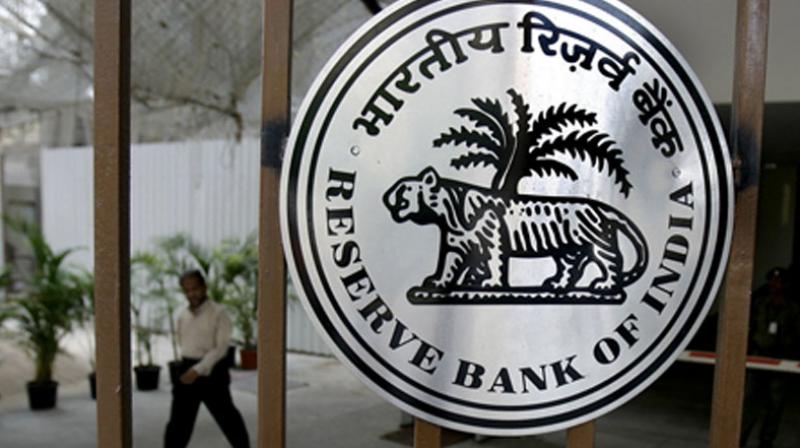Govt, RBI must work closely for a ‘big bang’ cut

Conventional economic thinking is that growth is to be stimulated by the fiscal policy of the government and inflation is to be checked by the monetary policy of the Reserve Bank of India (RBI). Consequently, the Government of India, with price stability in mind, signed a Monetary Policy Framework Agreement (MPFA) with the RBI on February 20, 2015. The RBI Act 1934 was also amended to give statutory backing to this. The mandate for the RBI under this framework is to target inflation, or precisely to say future inflation based on Consumer Price Index at four per cent with a tolerance band of ±2 per cent. It is not that the RBI was not responsible for containing inflation earlier. But, with the MPFA, the RBI must explain to the government in the form of a report if the inflation goes beyond the stipulated limit. To implement the MPFA, the Monetary Policy Committee (MPC) was formed on June 27, 2016 with three members from the RBI and three more economists appointed by the government. The Reserve Bank governor is the chairman of the MPC. In case of a tie, the RBI governor’s vote will decide on the repo rate. If all the four from the RBI take the same decision, that decision will prevail over the decision of the other three. Thus, the RBI has an upper hand in the MPC and hence the repo rate decision. By signing this agreement, the government did not wash off its hands from controlling inflation. Instead, the Union government essentially sought the cooperation of the RBI in controlling inflation and stimulating growth.
Every bank has to deposit a percentage of their deposits in the RBI to safeguard the interests of the depositors. However, banks can seek loans from the deposits it made to the RBI for the short term at an interest rate, which is called repo rate. The banks would decide their lending rate on the basis of the repo rate, fixed and changed by the RBI at regular intervals. The government knew that if inflation increases, the RBI would hike the repo rate. Once the repo rate is increased, entrepreneurs borrow less from banks for the initiation of their ventures and industrialists and traders borrow less for expansion. Individuals would also borrow less from banks for housing, vehicle and other requirements. Once inflation increases, it results in an economic slowdown and this is a vicious circle. Although as per the MPFA, the RBI is responsible for controlling inflation — it is the government which should control inflation and if it fails to do so, it would boomerang on it in the form of an economic slowdown.
Let us see how the RBI has responded with a repo rate change with respect to inflation since 2009. When the average yearly inflation was 10.1 per cent between 2009 and 2014, the RBI increased the repo rate to eight per cent from 4.75 per cent, which was the right move by the RBI. But, when the average yearly inflation was 4.7 per cent between 2014 and 2019, the RBI decreased the repo rate to only six per cent from eight per cent. In fact, the RBI reduced the repo rate to 6.5 per cent from eight per cent before the constitution of the MPC and after the constitution of the MPC, the repo rate was reduced to just six per cent from 6.5 per cent. Put it simply, the response of the RBI and the MPC in terms of a repo rate cut was just two per cent when the government managed to bring down inflation by 5.4 per cent.
Modi 1.0’s message to the RBI and the MPC through the MPFA was this. The government would reduce the input costs by various measures and schemes across the agriculture, manufacturing and service sector activities and thereby check inflation. The measures may range from GST (which increased the average daily travel of trucks from about 280 km to about 500 km) or the construction of 35,000 km of roads (which again reduced the travel time), encouragement to digital transactions (which reduced unnecessary costs associated with cash transactions) to improving the index of ease of doing business. Once the inflation is very much under control, we, the government, would expect the RBI and the MPC to reduce the repo rate, which would induce new investment and induce economic growth. It is true that the RBI is a constitutional body and its independence and autonomy should be preserved.
The Union government, or for that matter, the ministry of finance should not interfere in the functioning and decision-making powers of the RBI. However, the larger scheme of things for higher economic growth with moderate inflation demands that the RBI complement the role of the government and does not work at cross-purposes with the government. Since the RBI and the MPC did not reduce repo rate to commensurate with reduced inflation maintained during Modi 1.0’s tenure, as a result, India was unable to achieve its true economic potential in Modi 1.0’s tenure. The message sent by the government through the MPFA was not understood by the RBI or the RBI decided not to understand the message during Modi 1.0’s tenure.
The RBI thought that controlling inflation was the sole responsibility of the MPFA and hence did not bother about economic growth and acted accordingly during Modi 1.0’s tenure. Only after Shaktikanta Das became RBI governor and Prime Minister Narendra Modi came back to power in the 2019 elections with a thumping majority have things started to change regarding repo rate cuts. In the two consecutive MPC meetings, the MPC reduced the repo rate by 0.25 per cent and 0.35 per cent respectively, making the repo rate now at 5.4 per cent. The RBI also decided to conduct six meetings in FY2019-20 to decide upon monetary policy — two more than the usual four.
The old economic thought was that the RBI is responsible for checking inflation and the government is responsible for economic growth and hence should operate in watertight compartments without talking to each other. Through the MPFA, the government conveyed the new economic thought that we will control inflation and the RBI should reciprocate the same with reduction in repo rates so that higher economic growth can be achieved along with moderate inflation. If the government fails to check inflation, nothing stops the RBI from wielding the Brahmastra of increasing the repo rate and bringing down inflation. Unfortunately, neither the new economic thought conveyed by the government was internalised by the RBI governors of the Modi 1.0 era, nor were they ready to heed what the government told them, despite the fact that they are internationally reputed economists.
However, with the arrival of Shaktikanta Das as RBI governor and a clear mandate given by the people to Mr Modi in the 2019 elections, the new economic thought has reached the corridors of the RBI. The repo rate at present is 5.4 per cent. There is a huge scope to reduce it further. Instead of reducing repo rates in drips and drabs, the MPC should go for one “big repo rate cut” to have a “big bang” effect on the investment climate and then monitor the impact of the same in the coming months.

